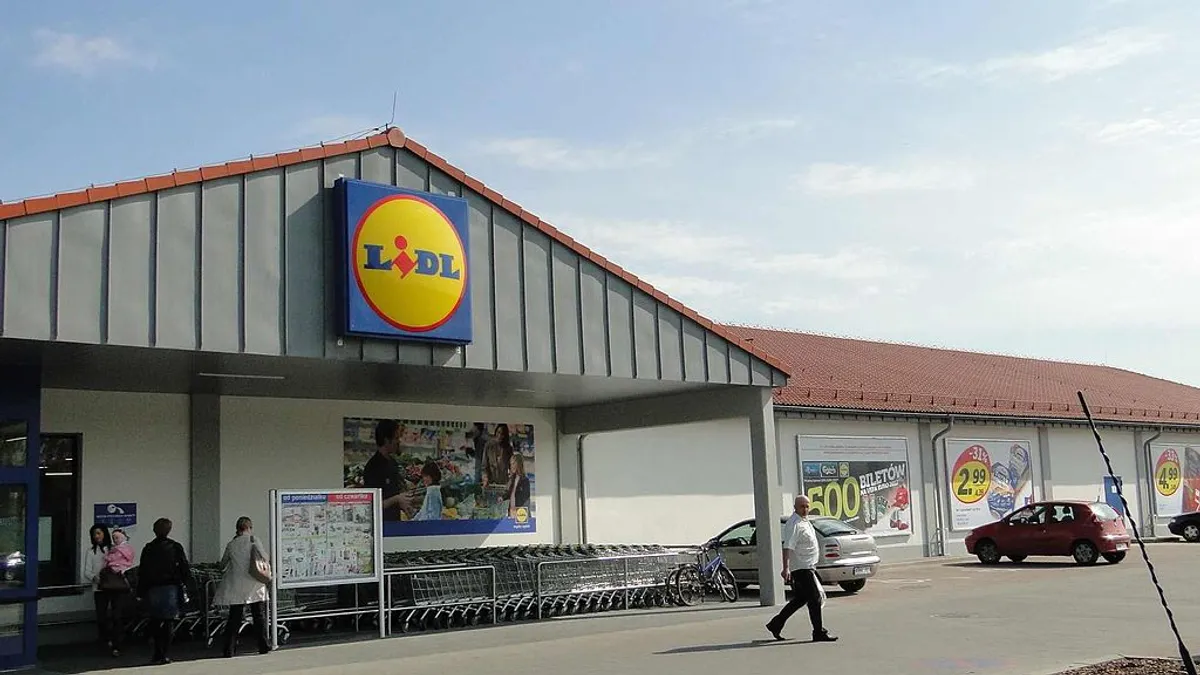Dive Brief:
-
Experienced U.S. grocery store site choosers and planners told Supermarket News they are skeptical of Lidl's early location choices. “Traditional” American stores don't like, or choose, mid-block, hard-to-access sites.
-
Douglas Munson and John Tippetts of MTN Retail Advisors told Supermarket News that they believe 70% of Lidl's first-being-developed sites have ingress and egress issues. They also contend Lidl doesn't understand the amount of sales its competitors have, and how much they plan to take away.
-
The MTN advisers also feel the Lidl sites will find it hard to draw the traffic they want – in terms of volume and customer types.
Dive Insight:
A Lidl website spells out what the company is looking for in prospective store sites, and it invited website visitors to make recommendations. The stated minimum qualifications – subject, of course, to change as situations warrant – sound pretty much like what a typical American-based company would look for for a small to mid-sized store. Within the company's targeted areas, a minimum of 3.5 acres to accommodate a 36,000 square-foot store with at least 150 to 180 dedicated parking spaces. And an established retail location, with more than 20,000 vehicles passing daily that is zoned for grocery use, and a signaled, full access intersection with high visibility.
Sounds much like the properties that the analysts Supermarket News spoke to more than likely looked at when they were in Kroger's property department.
What their analysis seems to downplay is the fact that prime “A” level supermarket locations – for a company that prefers to build from the ground up rather than take over existing store properties – are fast becoming a subject for food industry history studies. There aren't a lot, and nobody's making any more of that kind of real estate.
To an extent, then, Lidl's site ambitions are, to say the least, ambitious. But that's why the company is looking to America to expand its network of 10,000 stores. Real estate opportunities, at anything like realistically affordable prices, are theoretically more likely to be discovered in the “wide open spaces” of the U.S. than in long- and much-overcrowded European cities. But the weakness in that argument comes down to this: The “wide open spaces” have little to do with where Americans live or shop. Lidl, being a people-friendly company, wants to be where the people – the shoppers – are. However, that isn't where their “ideal location” is to be found.









